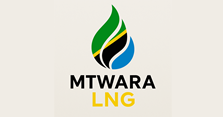Project Components
Introduction
The Mtwara LNG Facility in Tanzania is a transformative regional energy infrastructure project designed to accelerate the production and distribution of clean natural gas across East and Southern Africa. With an initial production capacity of 1.5 million metric tonnes per annum (MTPA) of Liquefied Natural Gas (LNG), the facility will strengthen regional energy security, displace diesel and heavy fuel oil, and foster sustainable industrialization.
The project employs advanced cryogenic technology, modular infrastructure for scalability, and an integrated circular economy framework to support long-term environmental and economic goals.
The project comprises four interlinked components:
- Liquefaction Center
- Distribution Center
- Eco-Industrial Park (EIP)
- Marine Export Jetty & Regasification Terminal (RSRT)
Liquefaction Center
Location: Mtwara, Tanzania
Initial Capacity: 1.5 million tonnes per annum (MTPA)
Technology: Cryogenic liquefaction at -162°C
Storage: 3 cryogenic tanks, each 50,000 m³
Key Features
- Feed Gas Processing: Gas will undergo pre-treatment to remove mercury, CO₂, moisture, and hydrocarbons, improving efficiency and equipment life.
- Advanced Liquefaction: Reduces gas volume by 600 times for scalable storage and export.
- Liquefaction Trains: ISO-compliant trains with dehydration and NGL recovery systems delivering 1.5 MTPA.
- LNG Storage: Three full-containment cryogenic tanks with boil-off gas recovery and 24/7 monitoring.
- Marine Export Jetty & RSRT:
- Multi-berth jetty for regional exports to Kenya, Mozambique, Zanzibar, and India.
- Domestic supply via high-pressure (50 bar) regasification systems.
- Includes 50,000 m³ emergency tank with 7-day capacity and safety redundancies.
- Joint EPC integration with a 100 MW power plant for seamless operation.
- Safety Systems: Ground flares, ESDs, gas detectors, and surveillance per international LNG standards.
- Modular Expansion: Scalable to 4.5 MTPA based on market and upstream supply.
Distribution Center
Function: Multi-country LNG and CNG distribution using pipelines, virtual pipelines, road and rail integration.
Target Markets: Tanzania, Kenya, Zambia, Uganda, DRC, Rwanda
Strategic Roles
- Tanzania: 6 hubs – National coverage and cross-border trade
- Zambia: 2 hubs – Fuel switch for mining operations
- DRC: 2 hubs – Off-grid industry and power
- Mozambique: 2 hubs – Inland supply to mining towns
- Kenya: 2 hubs – Clean energy for logistics and industry
Distribution Assets
- NGV conversion and training centers
- LNG/CNG refueling corridors
- Virtual pipeline fleets
- Cryogenic depots
Impacts
- Replaces diesel and cuts emissions
- Reduces industrial and transport energy costs
- Generates jobs in fuel conversion and logistics
- Strengthens national clean energy frameworks
Eco-Industrial Park (EIP)
Location:Mtwara, Tanzania
Area: 300 acres
Anchor Power Plant: 100 MW (scalable to 300 MW)
Core Features
- Power Backbone: 100 MW gas plant using high-efficiency engines; future integration of biogas, LNG, and WTE.
- Industrial Land Use: 30 sheds (20 x 11,000 m² and 10 x 5,500 m²); includes labs, admin, logistics, utilities.
- Smart Utilities: Zero-liquid discharge, centralized cooling and ICT, rooftop solar, biogas digesters.
- Logistics Integration: Paved roads, truck terminals, multimodal cargo hubs linked to port/rail.
- Environmental & Social: Biodiversity corridors, stormwater management, housing, pedestrian zones.
- Circular Economy: WTE facility and biosolid-to-fertilizer plant; 20,000 TPA ammonia via waste-to-energy.
Strategic Value
- De-risked site for industrial investment
- Clean energy cluster for hard-to-abate sectors (cement, steel)
- Agri-industrial support through fertilizer supply
- Direct alignment with Tanzania’s Vision 2025 and SDGs
Conclusion
Together, these components establish the Mtwara LNG Facility as a resilient, scalable, and climate-smart gas hub for East and Southern Africa—driving inclusive industrialization, clean energy transition, and regional competitiveness.
The Eco-Industrial Park offers a new standard for sustainable industry in Africa by integrating renewable energy, waste-to-energy, and circular resource systems. It will reduce operating costs, enhance environmental performance, and support Tanzania’s low-carbon development goals.
Figure 4. On-shore 100 MW power plant layout with full infrastructure including switchyard, transformers, liquid fuel backup, and support facilities.


